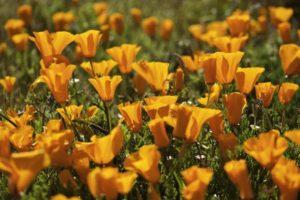Description and characteristics of Spirea Nippon Snowmound, planting and care
Spirea Nippon Snowmound is a shrub-like plant whose height is 1.5-2.5 meters by 10-20 years. Her homeland is Japan, the island of Shikoku. The width of the plant is equal to its height.
Description of Spirea Snowmound Nippon
A bush with a height of 1.5-2.5 meters, it gains such growth by 10-20 years, the width of the plant corresponds to the height. The branches of the bush are elongated, in a horizontal position they have an arched shape. Leaves are oval, 1-4 centimeters long. They have a dark green tint, and the edges may have a bluish green color. During late autumn, the leaves turn red. His life span is from 30 to 50 years.
The plant grows every year by 15-30 centimeters in height and width. Spirea flowers are white. The bush is completely covered with flowers. They are small in size, up to 0.8 centimeters, and the inflorescences are ball-shaped and reach 7-8 centimeters.
It begins to bloom in June. At this time, the bush looks beautiful both in close and distant form. Spirea blooms for 15-25 days. The plant is light-loving. Loves abundantly fertilized soil, but does not tolerate drought. Tolerates pruning well.

Advantages and disadvantages of the variety
The Snowmound Nippon Spirea is good for creating a beautiful and durable hedgerow due to the following benefits:
- growing rapidly;
- adapts to any soil;
- It does not require special care;
- looks attractive outwardly;
- blooms for a long time.
There are varieties in which the crown has a falling shape, such bushes do not require cutting, due to which maintenance becomes much easier. The disadvantages of such a plant are that many varieties do not tolerate severe frosts and prolonged drought.
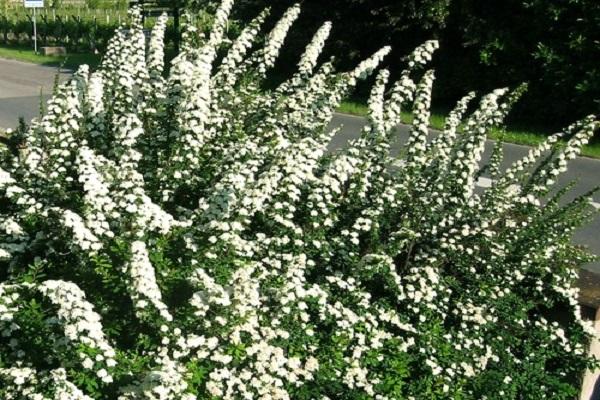
How and when does the spirea plant?
Planting can be done in September or in early spring. This happens before the buds have begun to bloom. The weather for disembarkation must be cloudy. Regardless of the fact that the plant is unpretentious, plant in well-fertilized soil. The planting site depends on which variety is being planted. The place is either sunny or shaded.
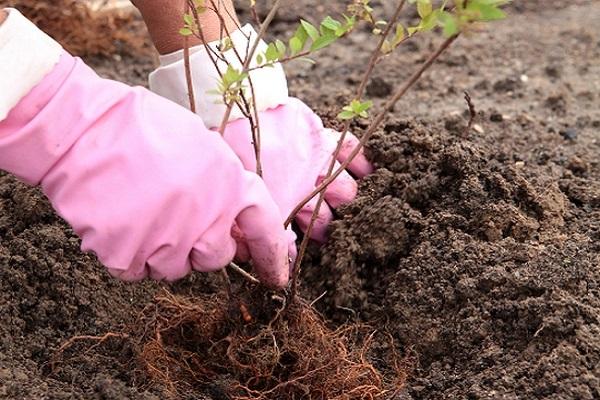
How is landing:
- Landing markings are made. Pegs are placed and the ropes are pulled.
- Further, depressions are made from 40 to 50 centimeters deep, and the distance between them is 0.5-0.6 meters.
- Mineral fertilizers are placed in the recesses at the bottom.
- At the end of the preparation for planting, the planting itself begins. The bush is placed in a depression, the root system is straightened and covered with earth.
- After planting, the soil is tamped and watered to the very root.
This is how the spirea is planted.
The plant can get along well with juniper, thuja, spruce.

Further care
In order for the spirea to continue to grow safely in the future, care is required for it. The main care options are: watering, feeding and cutting.
Since the root system is fibrous and close to the surface of the earth, watering should be done regularly. If the weather is very dry and hot, then you need to irrigate 2-3 times a month. Each bush needs up to 15 liters of warm water. After the plant is watered, loosening and mulching are performed. To prevent an earthen crust from appearing and moisture retained longer, peat, sawdust, leaves or seed husks for mulching are well suited.
The bush is fed 3 times. In the spring, they are fed with substances containing nitrogen. In the summer - organic. In the autumn period - with phosphorus-potassium fertilizer or wood ash.
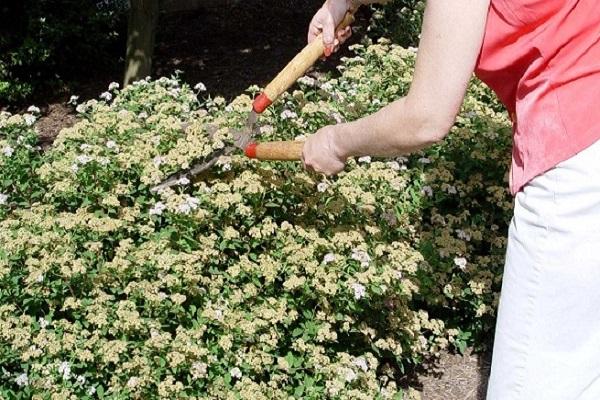
To enhance flowering, the bush is often pruned. Trimming scheme:
- Since the flowers of the spirea are located along the entire length of the shoots, it is necessary to cut off the faded branches by ½ the length of the shoot.
- In spring, frozen branches are cut, and in autumn they are cleared of old, weak shoots and excess growth.
- Once every 24 months, weak shoots are removed, and once every 10 years, the bush is cleaned of old ones.
Thus, the spirea is cared for after planting it in the ground.
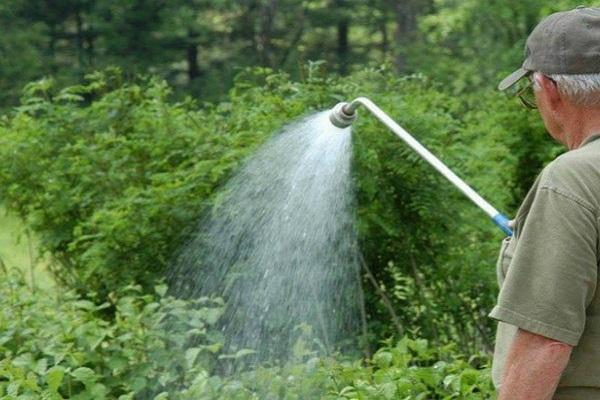
Preparing for winter
Despite the fact that spirea is resistant to frost, it must be prepared for the cold. To do this, you need: abundant watering, top dressing, fertilization with phosphorus, potassium and wrapping. For wrapping, non-woven fabric, dry straw or foliage are suitable. The layer must be at least 25 centimeters.
Diseases and pests
Despite the fact that spiraea has a high resistance to diseases and pests, it can be available for attack by some insects or any kind of infection. Here are the insects that harm the plant:
- Spider mite. This insect appears on the plant during the hot season. Signs of this pest: the appearance of white spots on the leaves. To eliminate it, such drugs as "Fozalon", "Fosfamid", "Metaphos", "Keltan" and "Akreks" are suitable.
- Aphid. This pest attacks throughout the summer period. It infects leaves, young shoots and flowers. If the aphid did not harm the plant much, you can use solutions from folk remedies (pepper tincture, tincture of tobacco, onion and garlic). If the plant is badly damaged, then Actellik, Fozalon, Pirimor will help.
- Blue meadow sawfly (caterpillar). It destroys leaves, buds and shoots. For its liquidation "Decis" is suitable.

Despite the fact that the plant can be sick, it still looks beautiful and attractive.
Reproduction methods
Reproduction occurs according to 3 methods: cuttings, layering, division.
Cuttings are the most common breeding method. Cuttings are harvested in early June. First of all, an annual shoot is selected from the bush and cut off at the very base. This branch is divided into parts so that each has 5 leaves.
The prepared material is dipped into the Epin solution for 10-12 hours. Next, the cuttings are planted in a container where wet sand is located. Deepen them at an angle of 45 degrees. When cold weather sets in, the workpieces are buried in open ground and covered with dry foliage. An inverted box is placed on top. When spring comes, the seedlings are opened and planted in a permanent place.
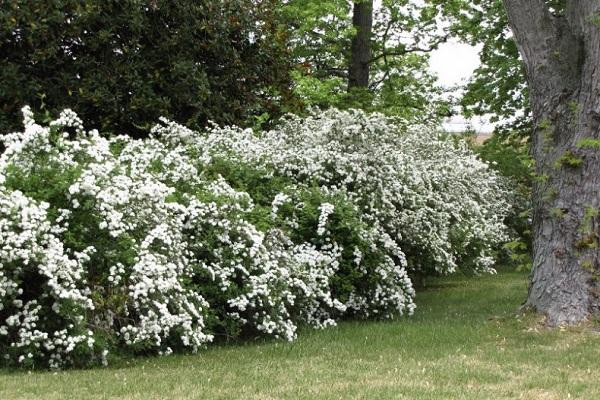
Reproduction by layering occurs as follows: in the spring, one of the branches is pressed to the ground. The end of the branch is deepened and fixed with the help of weighting. Water the layering in the same way as the entire bush. In autumn, the branch is removed and planted in another place.
The division occurs both in spring and autumn. But the best time for this is late summer - early autumn. A shrub is dug, the earth softens on the root system, then the roots are washed and straightened.Using a knife or secateurs, cut the roots into 2-3 pieces. Completes this procedure by planting the resulting parts in the ground and abundant watering.
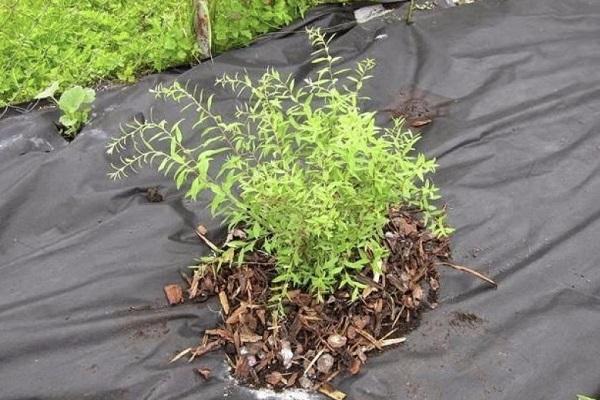
Landscape design
If you look at the plant from the side of landscape design, then it is well suited for landscaping different territories, is planted with conifers, and will also look good near a reservoir. Landscaping areas can be as follows:
- front garden or flower bed;
- sites;
- garden;
- a park;
- lawns.
When the bush is in bloom, it looks beautiful and is noticed from afar. Spirea looks good with woody and shrub compositions. Suitable for drawing up a rock garden, also complements garden paths, fences well. Has a good combination with lilacs. At a time when the bush is not blooming, its branches add grace to the whole composition. Due to the fact that the plant is unpretentious and frost-resistant, does not require special care, it is widespread in landscape design. These bushes are melliferous. Therefore, they can also be planted next to an apiary or single hives.
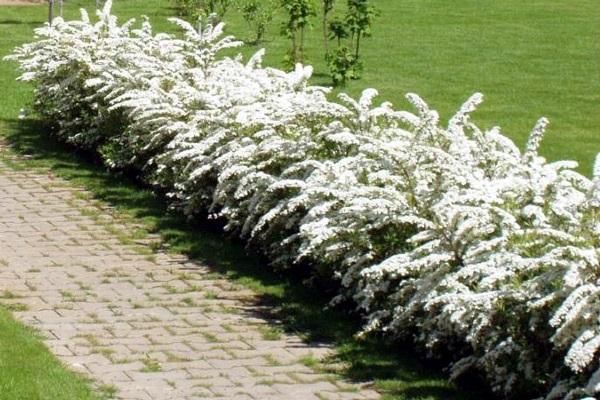
Conclusion
Spirea Snowmound is a popular member of the Pink family. This plant gained popularity due to the fact that it is not whimsical and frost-resistant. And also has high decorative qualities. It is possible to breed such a plant both alone and as part of a flower group. Any gardener who planted a spirea on his site will give it beauty, originality and create a small fabulous place from the site.

